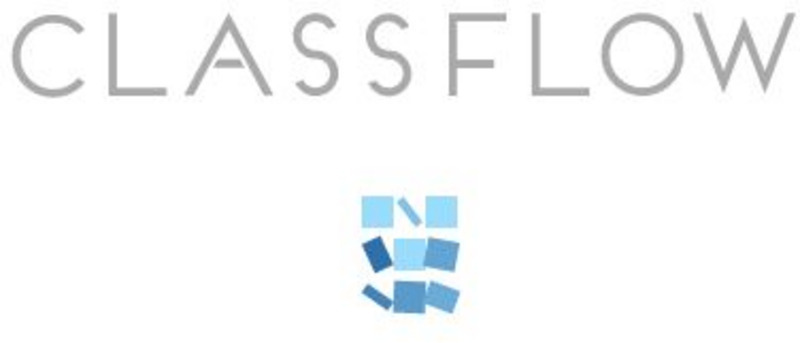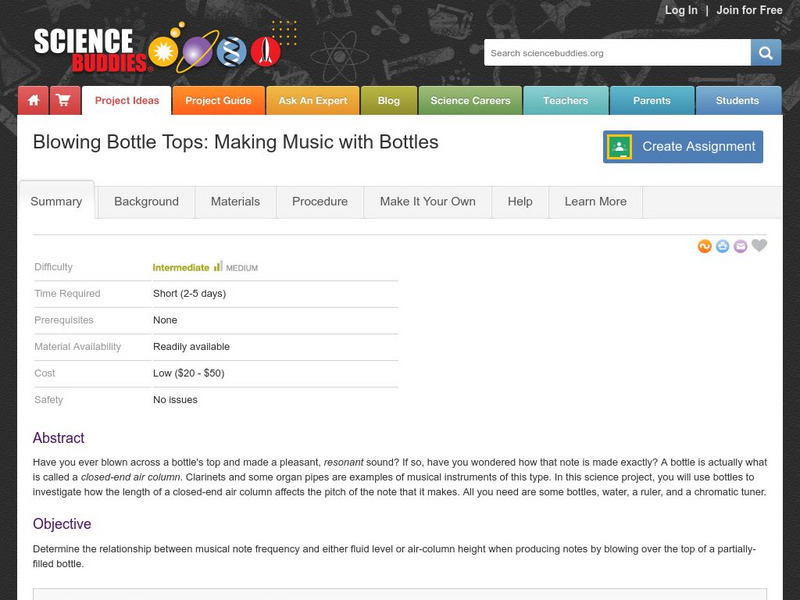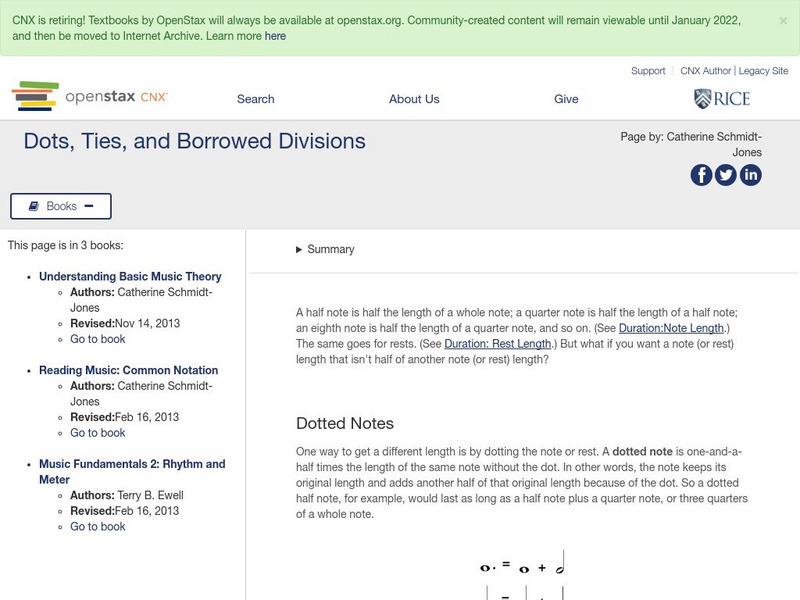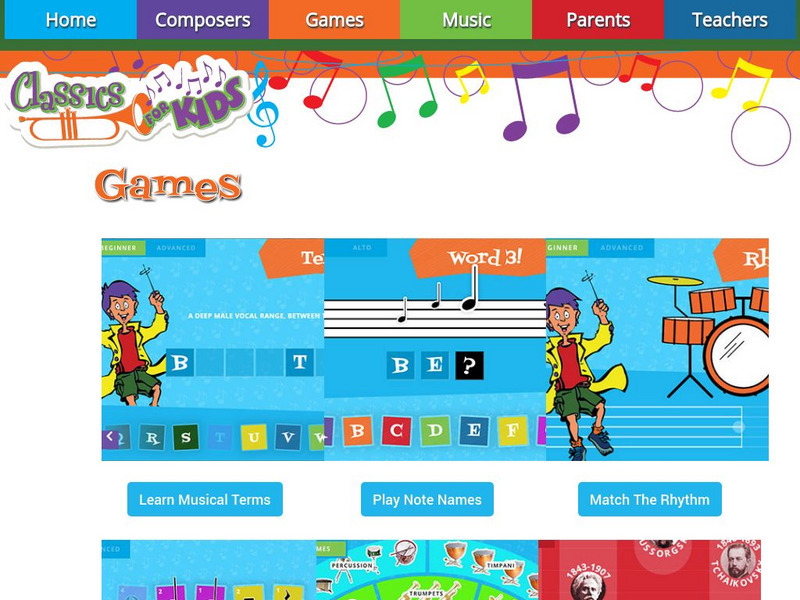ClassFlow
Class Flow: Learning to Reading Musical Notes
[Free Registration/Login Required] In this flipchart students will learn to recognize lines, spaces, and notes on the treble clef staff. It contains interactive pages, 2 hand-bell songs, and a hand-bell video clip.
Science Buddies
Science Buddies: Blowing Bottletops: Making Music With Glass Bottles
This is a musical project about the resonance of closed-end air columns. Organ pipes, flutes, and brass instruments are examples of musical instruments of this type. In this project, you'll learn how the pitch of the note produced...
E-learning for Kids
E Learning for Kids: Math: Street Orchestra: Fractions and Percentages
Adolfo loves Music and Math! Did you know musical notes can be expressed as fractions, decimals, and percents?
Other
Musicards.net: Online Music Theory Flash Cards
Flash cards are an excellent way to help you learn various topics. These online music theory flash cards can help you learn note names, intervals, notes on the piano and several other topics.
Music Education
Learning to Read Music: Basic Counting
Apply basic knowledge of reading music by counting beats and reading notes. Here are some simple lines of music which incorporate different types of notes and patterns in common time.
Music Education
Learning to Read Music: Basic Counting, Part 2
Beginning musicians can practice reading notes and counting beats using this resource that also provides several lines of music with different types of notes, rests, and time signatures.
Music Theory
Music theory.net
An online beginning music theory and ear training site. This site is for students to use at home to reinforce what they learn in class.
Other
Music Theory First Aid for Struggling Students
This site provides music theory information on such topics as rhythm, intervals, scales, chords, etc. Also, there is a fine section which describes the basic concepts of form and structure.
Other
Piano Music Sight Reading Practice
Actually this clever site drills pianists on note names and note placement on the keyboard. Kids can access this site at home for practice. Both treble and bass clef are used.
Cosmo Learning
Cosmo Learning: Courses: Guitar Music Theory
A series of 16 video lessons that teach basic guitar theory. Lessons discuss intervals, perfect and diminished notes, and octaves. Videos vary in length.
Ducksters
Ducksters: Music for Kids: Listen, Play, Learn
On this site, students learn about brass, string, and woodwind musical instruments. Listen to tunes, discover artists, and find out how music and notes work.
Ducksters
Ducksters: Music for Kids: How Brass Instruments Work
Kids learn about how brass instruments work. Musical notes made with slides, valves, and bells.
Music Education
Learning to Read Music: Clefs
Younger musicians and music-appreciation students can learn the notes of the treble clef and bass clef.
Other
Ruby Cliff Computing: Learn Guitar Theory With Virtualoso Guitar
This is a fantastic site that teaches basic music reading, especially as related to the guitar. Although the site is a promotional software site, the trial version is excellent by itself.
OpenStax
Open Stax: Catherine Schmidt Jones: Pitch Sharp, Flat and Natural Notes
Learn about the meanings and uses of pitch and accidentals. Including sharp, flat, natural and double sharps and flats, this lesson explains why they are necessary.
Music Education
Learning to Read Music: Time Signatures
Beginning music students learn the definition of time signature and examples of time signatures in music.
Other
Tone Savvy: E Music Theory
This site provides good online learning games and exercises for music theory. It also has a lot of options for teachers if they choose to subscribe.
Alabama Learning Exchange
Alex: Dancing to New Heights
Lesson plan for young students to move their bodies in specific ways. Warm-up exercises are done to culturally diverse music. (Note: Lesson references a book that is not included and contains a link to a song that does not work.)
OpenStax
Open Stax: Catherine Schmidt Jones: Dots, Ties, and Borrowed Divisions
Read and learn about how dotted notes and ties work. Included on this page is a self checking quiz.
Ducksters
Ducksters: Music for Kids: How String Instruments Work
Kids learn about how musical string instruments work. Understand what makes the music and notes on this website.
PBS
Classics for Kids: Games
Compose your own music, match the rhythm, form words with notes, and learn more about music and history in these games to teach students about classical music.
Other
Whitney Museum of American Art: Georgia O'keefe: Abstraction
Find a full-featured analysis of an abstract work by Georgia O'Keeffe that communicates many key elements of her art, such as her use of color, the inspiration she found in nature, and her approach to abstraction. Includes insightful...
TeachEngineering
Teach Engineering: What's a Wavelength?
Students measure the wavelength of sounds and learn basic vocabulary associated with waves. As a class, they brainstorm the difference between two tuning forks and the sounds they produce. Then they come up with a way to measure that...
























